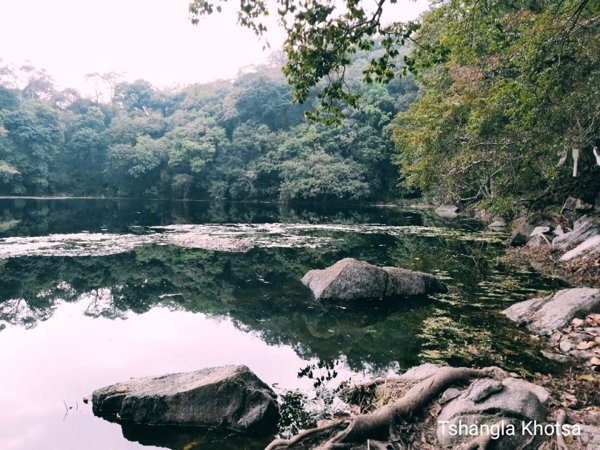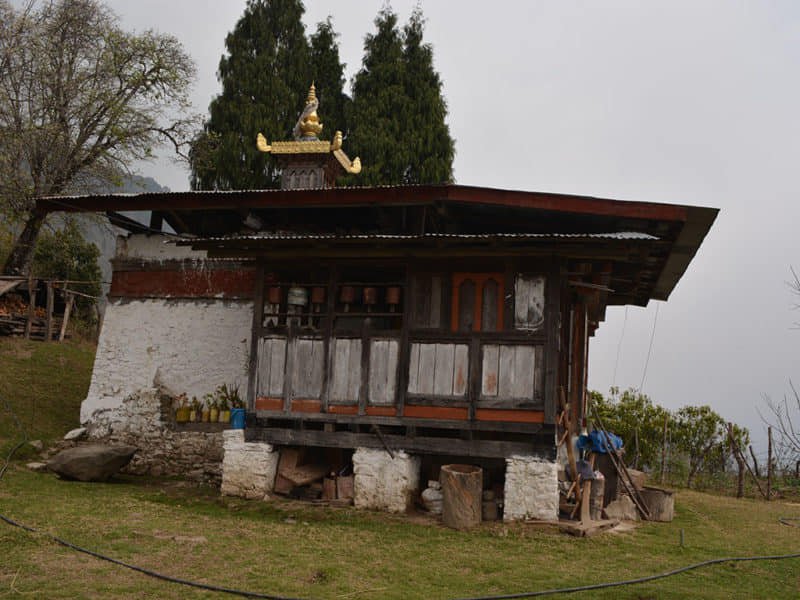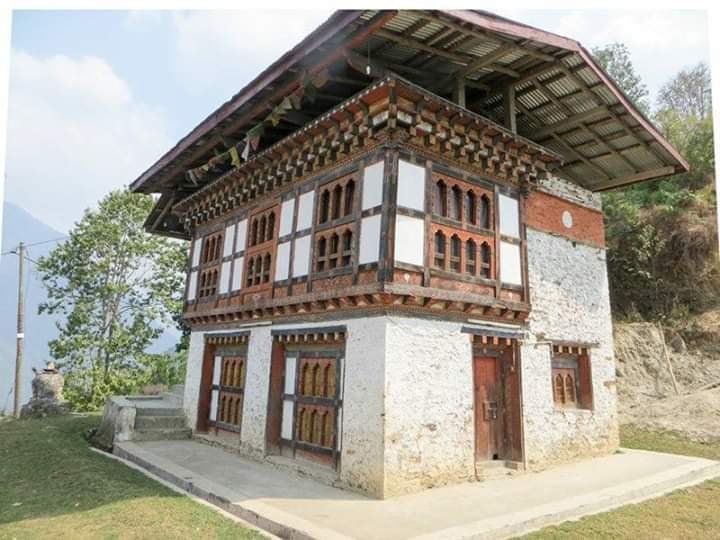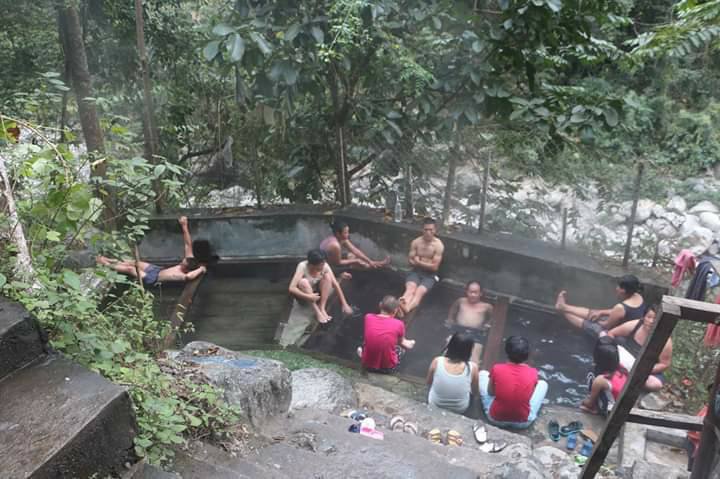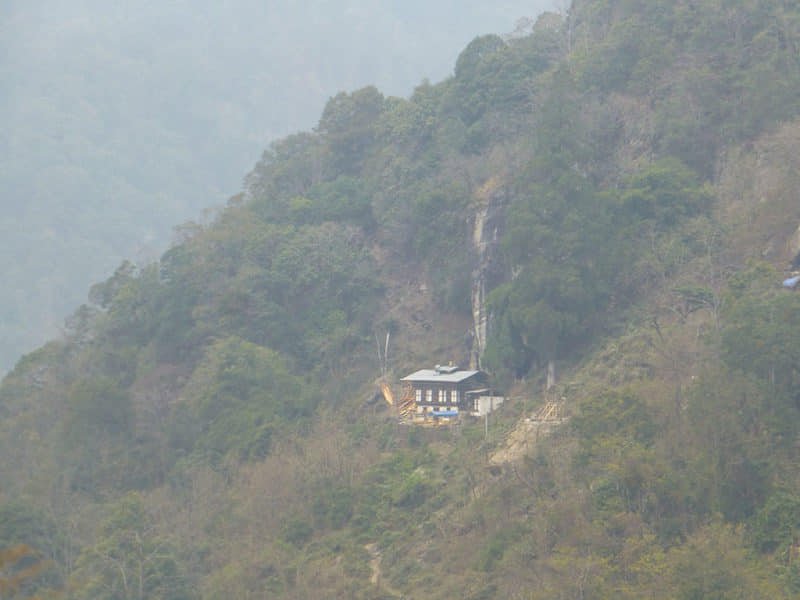Tingkar Ney
Category:
Temple
Address
Zhemgang
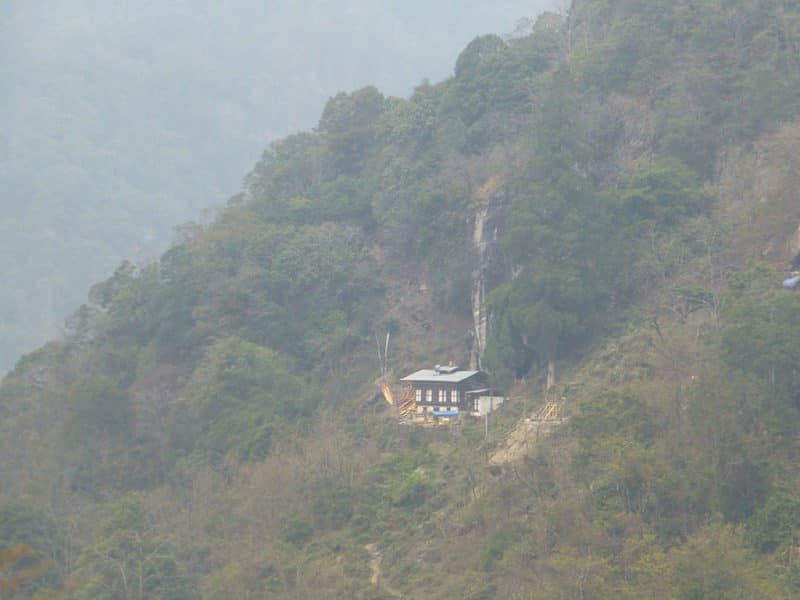
Tingkar Ney is located in Shingkar gewog, Zhemgang district. The gewog is approximately a day’s journey by car from Zhemgang town. It takes an hour on foot to reach Tingkar Ney from Shingkhar gewog center. The nearest household is roughly 20 minutes’ walk from the temple.
The temple is built at the base of a huge rock overlooking the Chamkharchu. A rock is perched on another rock forming a huge cave. There are four doorways called the doorways of the east, west, north, and south.
The temple is popularly known as Tingkar Ney, but the Ney Yig (guide to the sacred site) refers to this place as Beyul Tingkhara (sbas yul gting kha ra, Hidden Land of Tingkhara). The Ney Yig also says that the temple is like the heart of Guru Rinpoche.
The actual date and the person who built the temple are unknown, but the Ney yig claims that Guru Rinpoche had opened the door to the Ney (sacred site). The names of people who had sponsored meals and refreshment during the construction are on the wall; however, half the name list and the date of the construction are damaged.
Our oral source, Ap Rinchen Wangdi says that he has been the caretaker of the temple for the last 30 years, and before him his family was the custodian of the temple; unfortunately, he does not have any written document about the temple. However, his narrative refers to the huge earthquake that supposedly occurred in the rooster year of 1897. It is believed that the temple was completely destroyed by that earthquake, but the huge rock behind the temple had not shifted an inch. The popular belief is that Guru Rinpoche had tied down the rock with four iron chains, whereas another rock in the shape of a table had rolled down during the earthquake, and it lies almost a 100 meters below the temple.
According to the oral source, the temple was renovated during the reign of Trongsa Penlop (Provincial Governor) Gongsar Ugyen Wangchuk (1862-1926). The Penlop presented statues of Guru Rinpoche, Khando Yeshey Tshogyal, Khando Mendarawa and Chukchizhay (11-faced Avalokiteshvara) to the newly renovated temple. The wall paintings were also completed during the renovation circa end of the 19th , or in the beginning of the 20th century.
The caretaker states that the temple is revered as a sacred site by the whole of Kheng Rig Namsum (the three areas of the Kheng region). Earlier, people from these areas would offer 2 dreys (approx. 3 kgs) of grains every month to the temple, and Trongsa Dzong would supply a hundred bundles of incense sticks and butter for the butter lamps to the temple. He narrates that when the monetization started in Bhutan, this culture of offering also stopped. Nevertheless, the temple is still sponsored by the government. In the spring of 2017, the wood work renovation was in progress, and the fund for the renovation came from the government.

According to the caretaker, the temple had statues made of gold, but all the statues were destroyed during the earthquake of the rooster year (approx. 1897). Today the main statues in the temple include Guru Rinpoche, 11-faced Chukchizhay (Avalokiteshvara), Khando Yeshey Tshogyal and Khando Mendarawa. All the statues are made of clay. There are smaller statues of historical Buddha, Tshepame (Amitayus) and Zhabdrung Ngawang Namgyal.
On the right side of the main altar is an old Tashigomang (a miniature temple, a three dimensional portable shrine) placed on the table. The current caretaker’s grandfather Lengkong was a Manipa (ritual master) and he had travelled extensively with the portable shrine in the region and to the eastern part of Bhutan.
There are also two different shaped rocks: one spherical and the other triangular in shape. It is believed that these rocks have the potential to bless childless couples with children. The spherical rock blesses with a male child, and the triangular-shaped rock blesses with a female child. The childless couple has to carry the rocks and do 108 circumambulations around the temple. If one is unable to do 108 rounds, the couple can opt for 7 circumambulations, but the minimum requirement is 3 circumambulations.
To the west, the wall paintings depict Guru Tshengay (eight manifestation of Guru Rinpoche) with Guru Rinpoche in the center, Khando Yeshi Tshogyal to the left and Khando Mendarawa to the right. On the north wall, there is Chenrezig (Avalokitesvara), and to the east Jampelyang (Manjushri). There are small prayer wheels embedded into the exterior wall of the temple.
The temple’s protective deity is Terdag Zorarakye, a fierceful deity from Khenpajong in Kurtoe. It is believed that Guru Rinpoche had entrusted the deity to look after the temple and the people of Kheng Rig Namsum. The people in that region say that in the summer the deity resides in Tingkar Ney, and in the winter he resides in Wamling village, adjacent to Shingkhar gewog.
The family has a Kasho (Decree) from the Trongsa Penlop stating that the family is exempted from any kind of tax levied on the people. The responsibility of the family is to organize and conduct important rituals. The nearby villagers come with offerings of rice and ara (locally brewed alcohol), and help the host in the preparation during the rituals. The caretaker organizes and sponsors some of the following rituals:
1.Nyungney (prayers and fasting) is conducted on the 1st month of the Bhutanese calendar as ordered in the Decree (Kasho).
2.Tenda Tshechu (spral zla tshe bcu) is conducted on the 10th day of the 5th month of the Bhutanese calendar.
3.Tsechus (prayers) are conducted on the 4th day of the 6th month, on the 10th day of the 7th month, on the10th day of the 8th month, and on the 10th day of the 10th month of the Bhutanese Calendar.
4.On the 22nd day of the 9th month of the Bhutanese calendar, a ritual on Lhabab Duechen (Descending Day of Lord Buddha) is organized.
A ritual called Soeldep is organized by the villagers during the cultivation season, especially, before the plantation. This offerings is made to have a good harvest.
5.The villagers also perform a ritual called ney soel (gnas gsol). It is performed either to stop the rain, hail storm and cyclone, or, to pray for rain during the farming season, if there is a dry spell.
Source:
Choni Tshewang, Lecturer, College of Language and Culture Studies, Taktse.
Bhutan history, FB
Reviews
No review available

